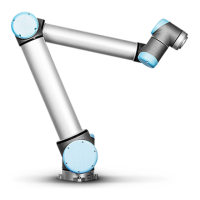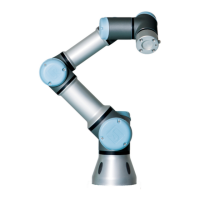Chapter 2
Electrical Interface
2.1 Introduction
The robot is a machine that can be programmed to move a tool around in the
robots workspace. Often, it is desired to coordinate robot motion with nearby
machines or equipment on the tool. The most straightforward way to achieve
this is often by using the electrical interface.
There are electrical input and output signals (I/Os) inside the control box and
at the robot tool flange. This chapter explains how to connect equipment to
the I/Os. Some of the I/Os inside the control box are dedicated to the robot
safety functionality, and some are general purpose I/Os for connecting with
other machines and equipment. The general purpose I/Os can be manipulated
directly on the I/O tab in the user interface, see the PolyScope Manual, or by
the robot programs.
For additional I/O, Modbus units can be added via the extra Ethernet con-
nector in the control box.
2.2 Important notices
Note that according to the IEC 61000 and EN 61000 standards cables going
from the control box to other machinery and factory equipment may not be
longer than 30m, unless extended tests are performed.
Note that every minus connection (0V) is referred to as GND, and is connected
to the shield of the robot and the control box. However, all mentioned GND con-
nections are only for powering and signaling. For PE (Protective Earth) use one
of the two M6 sized screw connections inside the control box. If FE (Functional
Earth) is needed use one of the M3 screws close to the screw terminals.
Note that in this chapter, all unspecified voltage and current data are in DC.
It is generally important to keep safety interface signals seperated from the nor-
mal I/O interface signals. Also, the safety interface should never be connected
to a PLC which is not a safety PLC with the correct safety level. If this rule is not
followed, it is not possible to get a high safety level, since one failure in a normal
I/O can prevent a safety stop signal from resulting in a stop.
15

